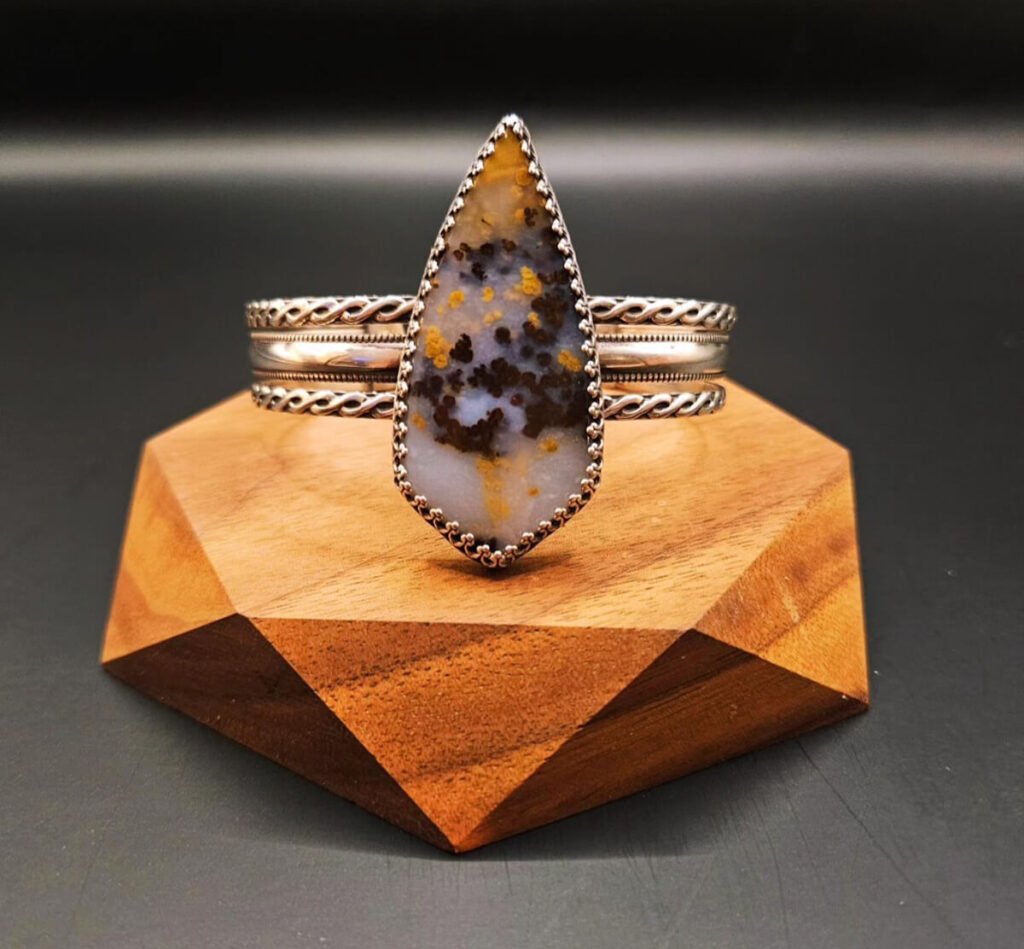Dendritic agate is a beautiful variety of chalcedony, a microcrystalline form of quartz, characterized by its distinctive branching or fern-like patterns known as dendrites. These inclusions, typically black or brown, are formed by manganese or iron oxides that have crystallized within the agate during its formation.
- Dendritic agate forms in cavities or voids within host rocks, often as a result of volcanic activity or erosion.
- Silica-rich solutions containing dissolved minerals, such as manganese or iron oxides, seep into these cavities.
- Over time, the silica and minerals are deposited in layers, and the manganese or iron oxides crystallize into the branching dendritic patterns.
- This process can take millions of years.
Dendritic agate deposits are found in various locations worldwide, including:
- Brazil
- India
- Madagascar
- USA (especially Oregon and Montana)
- Mexico
- Kazakhstan
- Russia
This particular dendritic agate was part of my father’s collection that I inherited. The cabochon is set in sterling silver gallery wire and soldered to 3 bands of pattern wire that are all oxidized.
